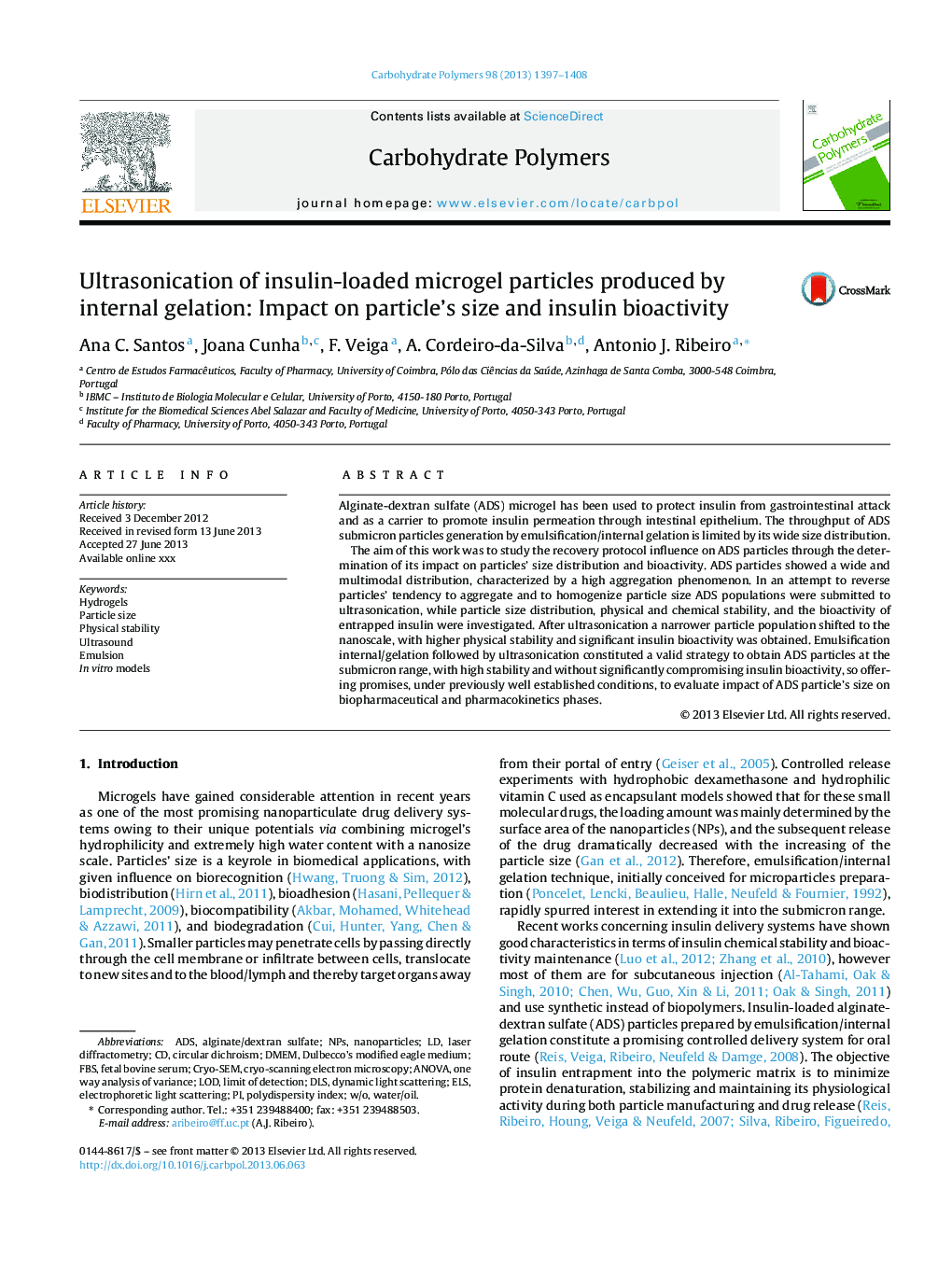| Article ID | Journal | Published Year | Pages | File Type |
|---|---|---|---|---|
| 10601642 | Carbohydrate Polymers | 2013 | 12 Pages |
Abstract
The aim of this work was to study the recovery protocol influence on ADS particles through the determination of its impact on particles' size distribution and bioactivity. ADS particles showed a wide and multimodal distribution, characterized by a high aggregation phenomenon. In an attempt to reverse particles' tendency to aggregate and to homogenize particle size ADS populations were submitted to ultrasonication, while particle size distribution, physical and chemical stability, and the bioactivity of entrapped insulin were investigated. After ultrasonication a narrower particle population shifted to the nanoscale, with higher physical stability and significant insulin bioactivity was obtained. Emulsification internal/gelation followed by ultrasonication constituted a valid strategy to obtain ADS particles at the submicron range, with high stability and without significantly compromising insulin bioactivity, so offering promises, under previously well established conditions, to evaluate impact of ADS particle's size on biopharmaceutical and pharmacokinetics phases.
Keywords
ADSDLSCryo-SEMDMEMFBSDulbecco's modified Eagle MediumNPsW/OELSEmulsionParticle sizeANOVAPhysical stabilityLaser diffractometrycircular dichroismfetal bovine serumpolydispersity indexUltrasoundLodlimit of detectionIn vitro modelsCryo-scanning electron microscopyNanoparticlesHydrogelsElectrophoretic light scatteringDynamic Light Scatteringone way analysis of variance
Related Topics
Physical Sciences and Engineering
Chemistry
Organic Chemistry
Authors
Ana C. Santos, Joana Cunha, F. Veiga, A. Cordeiro-da-Silva, Antonio J. Ribeiro,
